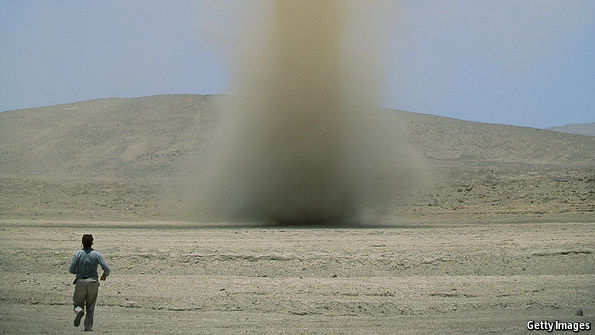Powerful whirlwinds explain an odd feature of the Atacama desert
 Crystal clear?
Crystal clear?THE Salar de Gorbea, at the southern end of the Atacama desert, in Chile, is one of the most hostile places on Earth. It receives virtually no rainfall and the little water it does host is contained in ponds both acidic and salty. It therefore has no vegetation. It is, though, the site of some of the most extraordinary dunes on Earth.
Most dunes are made of sand: grains of silica that are 2mm across, or less. There are exceptions. The White Sands National Monument in New Mexico, for example, is so called because the ingredients of its dunes are sand-grain-sized crystals of gypsum. But this exception proves the rule, because the point about a dune is that it is created by the wind, and when it comes to minerals, the wind can generally pick up and move around only sand-sized objects. The dunes of Salar de Gorbea, however, are an exception that proves no rule at all. They, too, are white, because they are also made of gypsum. But the gypsum in question includes crystals more than 20cm long. How such dunes could form by wind action has long been a mystery. Kathleen Benison, of West Virginia University, thinks, however, that she has solved…Continue reading
Source: Economist




